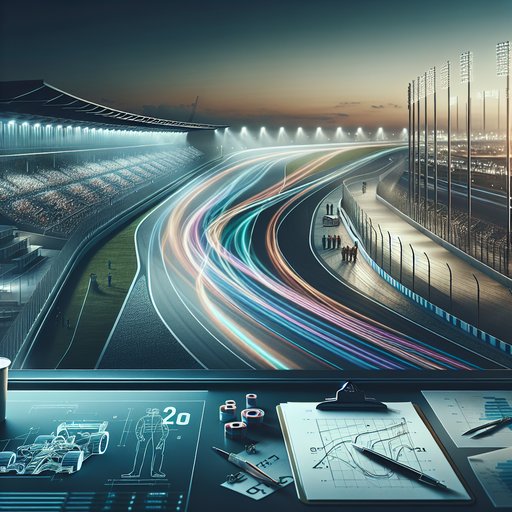
Before Formula 1 fires up an engine, a venue must pass one of motorsport’s most exacting gatekeepers: the FIA’s circuit homologation process. This is where high-speed ambition meets data, engineering, and medical planning, determining which layouts earn the coveted Grade 1 license required to host Grands Prix. The standards evolve alongside the cars, which is why classic venues are reshaped and newcomers like Las Vegas have been purpose-built to modern criteria. With projects such as Madrid’s 2026 urban circuit moving through design reviews and long-standing tracks continually upgrading, FIA certification has become a living blueprint for how F1 balances spectacle with safety in the 21st century.
FIA circuit certification is central to how Formula 1 evolves, because it translates lessons from incidents, car performance trends, and technology into concrete requirements. When regulations or tires change, so do speeds and racing lines, and the homologation process recalibrates run-offs, barriers, and infrastructures to match. That is why older venues undergo incremental upgrades while new destinations are designed around the latest data, avoiding the compromise of retrofitting at the eleventh hour. The result is a constantly refreshed calendar in which eligibility is earned, not assumed, by meeting the same, uniformly enforced global standard.
The process begins on paper long before kerbs are poured, with the circuit promoter working through the national sporting authority and the FIA to target Grade 1 status under Appendix O of the International Sporting Code. Specialists model expected speed profiles and worst‑case trajectories to size run-offs and specify barrier types, then iterate the design until simulations show risk controls are robust. Only after construction and detailed inspection—covering everything from fence anchoring to sightlines—is a time‑limited license issued, followed by annual pre‑event checks. Temporary venues repeat that rigour every year, proving installation quality each build rather than trading on reputation.
Run-off philosophy is where modern F1 tracks have changed most visibly. Energy‑absorbing systems such as TecPro modules, concrete barriers with deformable interfaces, and high‑tension debris fences rated to FIA standards are now normal, especially on street courses. Designers blend asphalt and gravel strategically: asphalt slows cars predictably and helps drivers regain control, while gravel remains a powerful deterrent against abuse of track limits. The Red Bull Ring’s 2024 addition of gravel beyond the final‑sector kerbs is a recent example of using layout to reduce policing overhead and improve safety at the same time.
In Jeddah, sightline and barrier revisions over the last two seasons showed how fine-tuning wall placement can cut risk without sacrificing the circuit’s character. Kerbs and surfaces are scrutinised as much as walls. Raised “sausage” kerbs have been removed or reprofiled at several corners in recent years after launching incidents across junior formulas, and apex geometry is now designed to deter cutting without dangerous lift. The 2023 Qatar weekend highlighted how aggressive kerb shapes can interact with tire construction, prompting prompt track‑limit tweaks and a conservative stint‑length mandate; subsequent design reviews have focused on harmonising kerb loads with modern F1 tires.
Drainage, camber, and crossfall are also part of homologation, because standing water and aquaplaning risk are performance‑dependent. Even the painted white line is a safety device now: with track limits defined by that boundary, consistent markings and kerb‑line interfaces make enforcement clearer for drivers and stewards alike. Medical and intervention capability is non‑negotiable and highly prescriptive. Grade 1 venues must operate a fully equipped medical centre, field rapid‑response cars with critical‑care staff, and deploy trained extrication and firefighting teams that can reach any incident within defined response times.
The event’s medical plan includes guaranteed transfer to a designated hospital inside a maximum time window, whether by helicopter or a verified ground route—one reason sessions have occasionally been delayed when aviation conditions are unsuitable. Dedicated rescue access roads, strategically located marshal posts, and interoperable communications ensure that medical and sporting control work as one system. Those requirements are re‑verified during the week of the event, just like the hardware on the racing line. Race control technology and electrical resilience now underpin certification as much as asphalt.
Circuits are expected to provide comprehensive CCTV coverage, high‑accuracy timing loops, GPS‑based car tracking, and FIA‑spec light panels for digital flagging that integrates with neutralisations such as the Safety Car and Virtual Safety Car. Night races add another layer: uniform, glare‑controlled lighting with redundancy and backup power is mandatory, something venues like Jeddah and Lusail have implemented with rigorous testing. The same philosophy extends to paddock and pit‑lane systems—fire suppression, garage power, fuel handling, and the fibre‑optic backbones that carry timing and telemetry all require fail‑safe design. For temporary sites like Las Vegas, that means building a turnkey infrastructure that behaves like a permanent facility for a single week, and proving it works before cars run at speed.
Homologation is not a one‑time hurdle but an iterative safety contract that tracks must keep renewing as F1 develops. New projects such as the planned semi‑street layout in Madrid, slated for 2026, are moving through this pipeline now, while established circuits continue to refine kerbs, fences, and run‑offs to meet the latest guidance. The goal is not to eliminate risk—that’s impossible in elite motorsport—but to systematically manage it so that drivers race on circuits matched to the performance envelope of their cars. When that alignment is right, stewarding becomes cleaner, racing is better, and the calendar earns its variety without compromising core safety principles.
That is why FIA Grade 1 certification has grown into more than a stamp on a piece of paper—it is the architecture of modern Grand Prix racing. By coupling simulation‑led design with robust medical provisions and resilient infrastructure, the process turns diverse geography into a common standard of protection. As new venues join and old icons adapt, the same framework keeps F1 credible at 300 km/h: technologically sophisticated where it must be, and uncompromising where it counts most.












